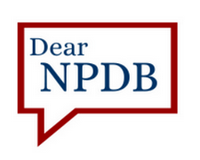NPDB Insights - January 2024

Is It Reportable?
If a practitioner takes a leave of absence from a medical staff and enters a rehabilitation program, must this be reported?
It depends. A practitioner who voluntarily enters a rehabilitation program should not be reported to the NPDB if no professional review action was taken and the practitioner did not relinquish clinical privileges while under investigation or in return for not conducting an investigation.
If a professional review action is taken against a practitioner's clinical privileges (e.g., suspension of clinical privileges), and the practitioner is required to involuntarily enter a rehabilitation program, the suspension must be reported to the NPDB. The reporting entity should explain in the narrative that the practitioner's privileges were suspended for reasons relating to professional competence and conduct. The fact that the practitioner entered a rehabilitation program should not be reported.

What Is a DBID and Why Is It Important?
What Is a DBID?
DBID stands for Data Bank Identification Number. As the name suggests, a DBID is the unique identifying number the NPDB assigns to each registered organization. We assign a DBID when an organization registers with the NPDB as an entity or an agent. It is important to keep your DBID secure because it uniquely identifies your organization. You should not share it with anyone outside of your organization.
Note: Each entity is responsible for determining whether it meets the eligible criteria for registering with the NPDB. A DBID is Not validation that your organization or your authorized agent meet the criteria for participation with the NPDB. DBIDs are Not separately assigned to certifying officials, authorized users, or other individuals associated with an entity.
Why Is It Important?
While you can now sign in to the NPDB without using your DBID, you must still store it somewhere safe and accessible. It is important to have your DBID readily available because it is needed in certain cases, such as:
- If your entity adds a new user account, the new user must enter the DBID when signing in to their account for the first time.
- Our Customer Service Center may need your DBID if you have questions about specific transactions, such as querying, reporting, or billing.
Have you lost your DBID? Or do you have other questions about your DBID? Check out the Identification Numbers section of the NPDB Guidebook for help.

Dear NPDB
I have more than one NPDB user account. How do I link them so I can sign in to one account with MFA?
You can have multiple NPDB user accounts linked to a single multi-factor authentication, or MFA, account. Each of your NPDB user accounts should be linked to a single multi-factor authentication, or MFA account. Do not create separate MFA accounts for each NPDB user account. Instead, you must complete the process to link each one to your MFA account. Sign in to each of your NPDB accounts, then go to the Update User Account page, and follow the instructions to link your account with your MFA service. You must do this for each of your NPDB user accounts, and link each of them to your single MFA account.
Once complete, you will see all of your linked NPDB accounts when you sign in with MFA. Just select the user account you want to access.
Note: There are many reasons why someone may have multiple user accounts. For example, a person may be responsible for submitting queries to the NPDB for a health system with multiple locations. Each location may have a separate entity registration with its own Data Bank ID, or DBID. That person would need to have a user account for each DBID to submit its queries. Individuals should not, however, have multiple user accounts for a single DBID.
Visit our Multi-Factor Authentication Help page for additional help with MFA.
The latest updates and resources are available at https://www.npdb.hrsa.gov.
Previous editions of NPDB Insights are available in our archive.
 An official website of the United States government.
An official website of the United States government.

